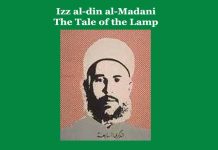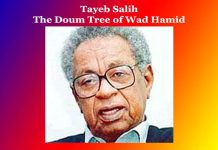R K Narayan | The Martyrs Corner | An Analytical Study
R K Narayan | The Martyrs Corner | An Analytical Study
R K Narayan | The Martyrs Corner | An Analytical Study
‘The Martyr’s Corner’ is a tragic short story written by R. K. Narayan (1906-2001) an Indian English short story-teller and novelist. The main theme of the story is the sufferance of the poor in the hand of the whimsical and selfish political brokers.
The main theme revolves round a shopkeeper called Rama. He set up his temporary shop between the Market Road and the lane leading to the chemist shop. At about 8.15 in the evening he came to his spot with a lot of assortments which included bondas, dosais, duck’s eggs, coffee etc. Within an hour he sold all his food staff and departed. He invested five rupees every day and earned another five as profit. Thus he ran on his business very well. One day when he came with his food staff in his usual place, he found some babbling crowd at the corner where he set up his shop. He said to them authoritatively, “Leave way, please.” But no one cared him. It was the young shop boy of a stationer’s that plucked his sleeves and said, “They have been fighting over something since the evening.” Ram asked, “Over what?” The boy said, “People say someone was stabbed near the Sales Tax Office when he was distributing notices about some votes of something. It may be a private quarrel. But who cares? Let them fight who want a fight.” Someone said, “How dare you speak like that about us? Everyone turned to look at this man sourly. Someone in that crowd remarked, “Can’t a man speak…?” His neighbour slapped him for this. Rama stood there with his load about him, looking on helplessly. This one slap was enough to set off a fuse. Another man hit another man and then another hit another. People shouted soda water bottles were used as missiles. Everyone hit everyone else. A set of persons entered all the shops and demanded that these be closed. The police came but the situation went worse. The police used lathis and teargas and finally opened fire. Many people died. At midnight Rama emerged from his hiding place and went home. The next day he said to his wife, “I would not take out the usual quantity. I doubt if there will be anyone there.” The next day when Rama went to the market with his food staff and was about to set up his shop then a couple of young men wearing badges came to him and said, “You cannot have your shop here…. This is a holy spot where our leader fell that day. The police aimed his gun at his breast. We are erecting a monument here.” Soon the spot was cordoned off, with some congregation or the other always there. Money boxes jingled for collection and people dropped coins. Consequently, Rama had to move nearly two hundred yards away, far into the lane. It meant that he went out of the range of the vision of his customers. He fell on their blind spot. After this Rama prepared very much less stock each day, but even then he carried home a lot of remnants. One day he returned home with just two annas in his pocket and announced to his wife, “I believe our business is finished. Let us not think of it anymore.” He put away his pans and tray and prepared himself for a life of retirement. He saved some money but he exhausted them soon and then he went to one Restaurant Kohinoor and began to work as a waiter. For twenty rupees a month he waited eight hours a day at the tables. When some customers ordered him about too rudely, he said, “Gently, brother I was once a hotel owner myself.”And with that piece of reminiscence, he attained great satisfaction.
Thus the author has shown how a poor man suffers from whimsical political leaders.
Rama is the main character of the story. He happened to be the victim of the political brokers. As he was deprived of his usual spot of business, his business fell down and later on he took to the job of a waiter in a hotel where he faced rude behaviour from some customers and thus he had to suffer in life. The title of the story is given after him, not after the leader who was killed by the police in the fuse. It is because the real martyr was not the leader, in the eye of the author, but Rama himself, as his means of livelihood came to an end which led him to suffer in life.
The author has employed the Objective Method in narrating the story. In this method, the author narrates his story from the outside.
The story, in Structure, is well one. The exposition is direct. The complication of the story begins with the fight and it reaches the climax when Rama had to shift his shop to a blind spot.
The Setting of the story is consistent with the events and situation. The author gives a good deal of description of the atmosphere and manners of his characters.
The Dialogue employed in the story is very logical as he uses them economically but all the dialogues have taken his story a step ahead and unfold the inner nature and motives of his characters.
The author has expressed his Philosophy of Life not directly but indirectly through the story and suggests that the poor often suffer the most because of the whimsical activities of the quarrelsome leaders.
The Language of the story is very simple as it is characterized by the use of simple, concrete and formal words and phrases, free from complicated sentence construction and harsh imagery.
All the Qualities of a good short story as — unity of purpose, brevity, spontaneity and universality are present in it. The brevity is also maintained throughout the story as all the component elements of a good short story are employed with the possible economy. Thus the universality is achieved by means of the reliable representation of the event. The story begins and ends with spontaneous logical order through proper stages.
As a short story, its Length is ideal as —neither very short nor long. 0 0 0. The Martyrs Corner
R K Narayan | The Martyrs Corner | An Analytical Study
Read More: R K Narayan’s Short Stroy ‘The Lawley Road’-An Analytical Study
N. B. This article entitled ‘R K Narayan | The Martyrs Corner | An Analytical Study originally belongs to the book ‘World Short Story Criticism‘ by Menonim Menonimus. R K Narayan | The Martyrs Corner | An Analytical Study
Books of Literary Criticism by M. Menonimus:
- World Short Story Criticism
- World Poetry Criticism
- World Drama Criticism
- World Novel Criticism
- World Essay Criticism
- Indian English Poetry Criticism
- Indian English Poets and Poetry Chief Features
- Emily Dickinson’s Poetry-A Thematic Study
- Walt Whitman’s Poetry-A Thematic Study
- Critical Essays on English Poetry
- Tawfiq al-Hakim’s Novel: Return of the Spirit-An Analytical Study
- Tawfiq al-Hakim’s Novel: ‘Yawmiyyat Naib Fil Arayaf’-An Analytical Study
- Analytical Studies of Some Arabic Short Stories
- A Brief History of Arabic Literature: Pre-Islamic Period …
Books on Linguistics by M. Menonimus:
- A Brief History of the English Language
- Essays on Linguistics
- My Imageries
- Felicitous Expression: Some Examples
- Learners’ English Dictionary
Related Searches:
- Short Stroy Criticism
- The Indian English Short Story
- Individual and Society …
- ‘Deliverance’ by Premchand Analysis
- Summary of Rabindranath Tagore’s ‘The Exercise Book
- Short Story ‘Yellow Fish’ Essay Example
- Notes on Roger Mais’s ‘Blackout’
- ‘Blackout’ by Roger Mais
- ‘The Dog of Tetwal’ Saadat Hasan Manto
- The Three Questions
- R. K. Narayan Biography, Books
- Short Stories R. K. Narayan
- ‘Lawley Road’ by R K Narayan
- The Martyr’s Corner
- ‘The Martyr’s Corner’ by R K Narayan …











